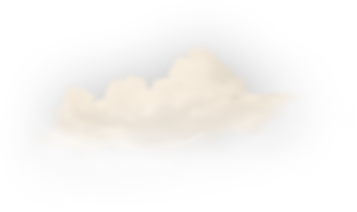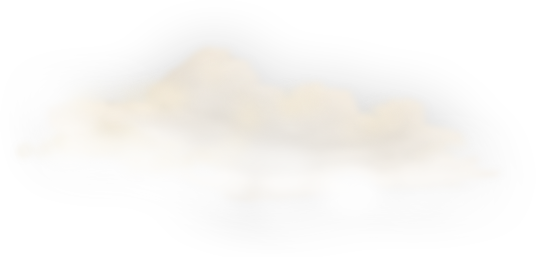Hiley, John S.
Place of Birth: Rugby
Date of enlistment: 20 January 1872
Age given at enlistment: 23
Rank: Private
Company: E
Location on 25 June 1876: With Custer's column
English by Birth, Scottish by Blood

- English by Birth, Scottish by Blood was published by The English Westerners’ Society to mark the 140th anniversary of the Battle of the Little Bighorn and also celebrates the life of gambler John Stuart Stuart Forbes who fought, and died, as Private John S. Hiley in Company ‘E’ of the 7th United States Cavalry.
- This meticulously-researched account, which is well illustrated with accompanying notes and sources, was compiled by Peter Russell in collaboration with Edinburgh-based historian, Leslie Hodgson. An additional seven-page chapter headed ‘Letters to Private John S. Hiley’ tells the story of correspondence posted, but not received, to this trooper following the battle.
- Contrary to popular opinion he was NEVER a pupil at Rugby School!
- A review of this excellent booklet can be found below and on the ‘Book Reviews’ page of this website.
- Only ONE COPY left, as at 12 June 2021
- This publication is priced at £7:00 to addresses within the UK and £10:00 (or $15 US currency notes only) to all other destinations. Prices include mailing costs.
- Please send Sterling cheques, made payable to ‘P. G. Russell’ (or currency notes), to: 18 Iverhurst Close, Bexleyheath, DA6 8HY, UK.

- A SCOT WHO FOUGHT WITH CUSTER
- Just inside the nave of St John the Evangelist church in Edinburgh a small brass plaque (see below) pays tribute to a soldier of a foreign army killed in one of the most famous battles in history.
- The memorial to John Stuart Stuart Forbes commemorates his death on 25 June 1876 alongside General George Armstrong Custer at the Battle of Little Big Horn.
- Despite the plaque being the only one of its kind in Scotland there were a number of Scots in the 7th Cavalry at the time of the battle, of which three were killed alongside Forbes with Custer.
- Now, a new book published to mark the 140th anniversary of the massacre, reveals the true story of how the son of a minor Scottish aristocrat ended up thousands of miles from home, fighting as a lowly cavalryman under an assumed name.
‘English by Birth, Scottish by blood’, by Peter Russell and Leslie Hodgson, tells the detailed story of how Forbes became a victim of Custer’s last stand.
- John Stuart Stuart Forbes was born in Rugby on 28 May 1849, the son of a wealthy Edinburgh banker. He returned to Edinburgh, aged two, and was educated at Edinburgh Academy before moving to Cheltenham aged 10 with his widowed mother.
- Over the next few years he attended a number of English private schools, never staying longer than a couple of years at each one.
- By the age of 21, having inherited £2,000 from his late father and his brothers’ love of gambling, he left Britain for New Zealand via New York sometime around 1871. Whatever happened over the next few months nobody knows but it’s believed he was involved in a scandal big enough to prevent him going home.
- What is known is that on 20 January 1872 Stuart Forbes enlisted as a Private in the United States Army under the alias of John S. Hiley, the married surname of his sister, Henrietta.
- “Why Forbes was serving under a false name is not known,” said Mr Russell, “People have said it was because of a gambling debt or that he had got a servant girl into trouble but none of that really rings true when you look deeply into his background, wealth and character.
- “Whatever it was it must have been something that would have brought shame on the family so that’s why he enlisted under the surname of his sister’s husband”
- Although the black sheep of his family Stuart Forbes appears to have been a model soldier. Despite being highly educated, in comparison to his peers, he never rose above the rank of Private.
- Stuart Forbes finally met his end on 25 June 1876 at Custer’s last stand at the Little Bighorn River in Montana along with more than 200 other soldiers of the 7th Cavalry.
- On the morning of the battle Custer, who had started out with little more than 600 men, divided his force. He divided his 12 companies into three battalions and three companies were placed under the command of Major Marcus Reno who was ordered to enter into the Big Horn Valley.
- Three other companies were assigned to Capt. Frederick Benteen who was ordered to hold the bluffs at the end valley to stop any of the Lakota, Northern Cheyenne and Arapaho warriors escaping.
Five companies remained under Custer’s immediate command while the 12th company, under Capt. Edward Mathey, detailed to bring up the rear with the mule train carrying supplies.
- The series of engagements that followed took place over three distinct but related actions which have collectively come to be known as the Battle of the Little Big Horn.
- Reno and his men were pinned own in the valley and had to fight their way to cover on a nearby hilltop, where they were besieged by hostiles for two days, while Custer’s Last Stand took place further up the valley.
- “How Stuart Forbes died and exactly where we will never know,” said Mr Russell. “His body was never formally identified but it’s likely to have been in Deep Ravine, where most of the men were killed, but it could equally be anywhere on the battlefield between the Little Big Horn River and Last Stand Hill.
- ”
On the monument to the fallen, which was erected some time after the battle, he is listed as J.S. HILEY. His real identity was only discovered after the army appointed a team to take an inventory of the dead soldier’s belongings.
- Among the items in Private Hiley’s trunk they found a letter from his mother which revealed his real name. Ironically, it also revealed that “the matter of some trouble he had gotten into in his native country was soon to be settled up and he could then return home without molestation”.
- Almost a year after the battle his family were given permission to erect a plaque in the Church of St John the Evangelist, Edinburgh, the only memorial to any member of Custer’s command in Scotland. It reads simply:
- In Memory of
JOHN STUART STUART FORBES 7th Reg’t United States Cavalry. Born at Rugby 28th May 1849. Killed in Action 25th June 1876.
St James 4: 13-14-15. Romans 8: 35-37.
- By Paul Kelbie in Scotland Correspondent, 3 September 2016

Plaque erected in the memory of John Stuart Stuart Forbes, St. John's Episcopal Church, Edinburgh. Taken by Sopharana Russell 16 March 2019.

Stained glass window dedicated to the memory of Charles Hay Forbes and daughters, Emilia Williamina and Emma Rebecca, which is above the plaque erected for John Stuart Stuart Forbes. This image graces the back cover of the booklet.























Comments: